
Aran Islands: on the road to Synge’s Chair, on Inishmaan. Photograph: Andy Haslam/New York Times



Aran Islands: on the road to Synge’s Chair, on Inishmaan. Photograph: Andy Haslam/New York Times




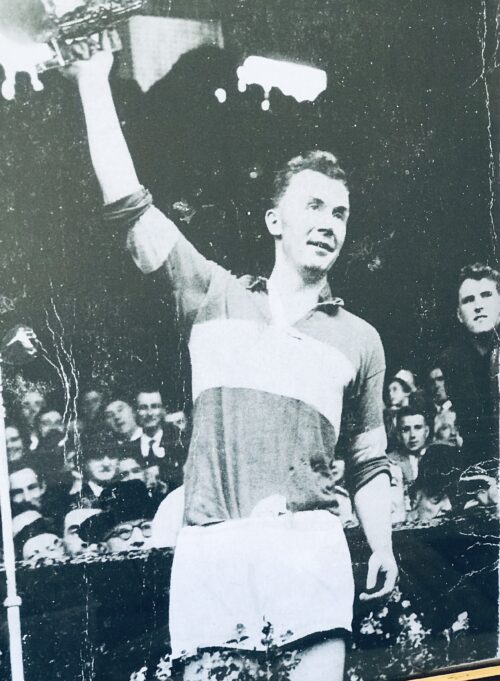
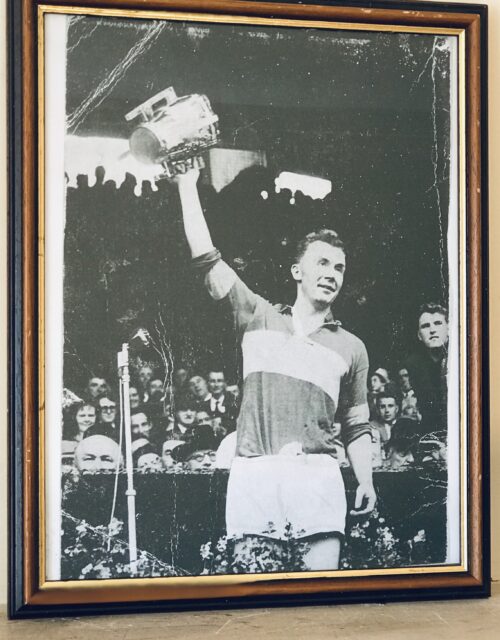



 Coursing operates in a highly regulated environment coupled with comprehensive rules directly applied by the ICC. It operates under a licence from the Minister of Arts, Heritage & the Gaeltacht, issued annually with a total of 22 conditions attached. Although our sport may take place only over the winter months and is sensitive to the hare breeding season, the protection and policing of preserves is a continuous activity and conducted on a voluntary basis. Quercus, the Belfast University research body reports that “Irish hares are 18 times more abundant in areas managed by the Irish Coursing Club than at similar sites in the wider countryside”.
Without regulated coursing there would be an increase of unregulated illegal hunting taking place throughout the year, with no organisation taking responsibility or interest in the overall well-being of the hare. If coursing clubs ceased to perform their functions, the hare population here would decline at a rapid rate as the proliferation of illegal hunting could easily rise to epidemic proportions as seen in the UK, where poaching and hare population decline are the order of the day.
Finally, I offer a quote I recently found that seems appropriate: “The future of coursing is so dependent on hare preservation that no effort should be spared by us to put it on an assured basis.”That was from an October 1924 edition of the Irish Coursing Calendar, now known as the Sporting Press newspaper.
The Irish Coursing Club has been, and will continue to be, deeply immersed in the conservation of the Irish Hare population, always seeking new ways to improve conservation in the face of loss of habitat due to the “advances” of our modern world and in spite of grossly uninformed efforts to ban it when no proven alternative conservation programmes are in place.
Coursing operates in a highly regulated environment coupled with comprehensive rules directly applied by the ICC. It operates under a licence from the Minister of Arts, Heritage & the Gaeltacht, issued annually with a total of 22 conditions attached. Although our sport may take place only over the winter months and is sensitive to the hare breeding season, the protection and policing of preserves is a continuous activity and conducted on a voluntary basis. Quercus, the Belfast University research body reports that “Irish hares are 18 times more abundant in areas managed by the Irish Coursing Club than at similar sites in the wider countryside”.
Without regulated coursing there would be an increase of unregulated illegal hunting taking place throughout the year, with no organisation taking responsibility or interest in the overall well-being of the hare. If coursing clubs ceased to perform their functions, the hare population here would decline at a rapid rate as the proliferation of illegal hunting could easily rise to epidemic proportions as seen in the UK, where poaching and hare population decline are the order of the day.
Finally, I offer a quote I recently found that seems appropriate: “The future of coursing is so dependent on hare preservation that no effort should be spared by us to put it on an assured basis.”That was from an October 1924 edition of the Irish Coursing Calendar, now known as the Sporting Press newspaper.
The Irish Coursing Club has been, and will continue to be, deeply immersed in the conservation of the Irish Hare population, always seeking new ways to improve conservation in the face of loss of habitat due to the “advances” of our modern world and in spite of grossly uninformed efforts to ban it when no proven alternative conservation programmes are in place.





“The good news is, it will be staying in Ireland, ” says the managing director of Adam’s auction house, James O’Halloran. “That’s all we’ve been allowed to say for the moment, but we’re hoping that more information will be released fairly soon.” It’s understood that the State was outbid for the table and that the new owner is a private buyer.
Bidding on the table started at €70,000 but with one online bidder, three on the phone and one person in the room, it didn’t take long to sail past its lowest guide of €100,000, followed quickly by its top estimate of €200,000. “It got to €360,000 quite quickly,” O’Halloran says. “We thought it would do reasonably well, but because there was nothing to compare it to, we didn’t really know what to expect.”
The three-metre-long table was the property of Lord Inchiquin. Its rectangular top sits on a frieze of a dozen carved heads, with four carved heraldic lion corner supports and two figures of Hope and Charity, which would originally have been found on the stern of a galleon. It spent 300 years at Dromoland Castle before moving to Bunratty, where its elaborate series of carved masks became a key attraction.
When it was announced that the table – described by the Knight of Glin, Desmond FitzGerald, as “one of the most important and earliest pieces of Irish furniture” – was to be sold at Adam’s Country House Collections sale at Townley Hall, near Drogheda, Co Louth, there were calls for it to be kept in Ireland as it represents part of our cultural heritage. The only question now is, where will the table find its new home?




 The Still House at John’s Lane Distillery, as it looked when Alfred Barnard visited in the 1800s.
The Still House at John’s Lane Distillery, as it looked when Alfred Barnard visited in the 1800s.




 The young John Brannick soon demonstrated a natural flair for the craft of whiskey-making. These early years, working within the hallowed halls of the John’s Lane Distillery, laid the foundations for his later exploits within the industry. It wasn’t long before the other great distilleries took note of his growing reputation and in 1852 George Roe & Sons enticed Brannick to join the House of George Roe & Co with the promise that he would some day become a Master Distiller.After nearly 20 years of perfecting his craft with the House of Roe, Brannick had reached the illustrious position of Master Distiller. His reputation amongst the great distilleries of Dublin was now firmly established, but his ambitions didn’t end there. Brannick had long harboured a burning desire to build the finest distillery in the world, and in 1870, having secured the necessary backing, he resigned his position and struck out on his own, establishing the Dublin Whiskey Distillery Company Limited. DWD.For the next two years Brannick worked on a revolutionary design for his distillery. A site was chosen, less than a mile north of Dublin’s city centre, on the banks of the River Tolka, and construction started on 22 July 1872 Exactly one year later, distillation began with the preparation of the first ever DWD wash. Meanwhile, with work on the great distillery underway, Brannick finally fulfilled another long-standing promise and married his sweetheart Mary Hayes on 26 January 1873.
The young John Brannick soon demonstrated a natural flair for the craft of whiskey-making. These early years, working within the hallowed halls of the John’s Lane Distillery, laid the foundations for his later exploits within the industry. It wasn’t long before the other great distilleries took note of his growing reputation and in 1852 George Roe & Sons enticed Brannick to join the House of George Roe & Co with the promise that he would some day become a Master Distiller.After nearly 20 years of perfecting his craft with the House of Roe, Brannick had reached the illustrious position of Master Distiller. His reputation amongst the great distilleries of Dublin was now firmly established, but his ambitions didn’t end there. Brannick had long harboured a burning desire to build the finest distillery in the world, and in 1870, having secured the necessary backing, he resigned his position and struck out on his own, establishing the Dublin Whiskey Distillery Company Limited. DWD.For the next two years Brannick worked on a revolutionary design for his distillery. A site was chosen, less than a mile north of Dublin’s city centre, on the banks of the River Tolka, and construction started on 22 July 1872 Exactly one year later, distillation began with the preparation of the first ever DWD wash. Meanwhile, with work on the great distillery underway, Brannick finally fulfilled another long-standing promise and married his sweetheart Mary Hayes on 26 January 1873.



“The extraordinary story of the ‘Finest Whiskey in the World’, a tale of one man’s vision, gloriously realised, only to be crushed by history and destroyed in a very Irish betrayal.” Tomas – DWD Brand Ambassador



Unfortunately for H.P. Bulmer, it wasn’t long before the company again changed hands. Coming out on the losing end of a legal dispute with the creators of Babycham sparkling perry over a competing product, they were forced to sell Bulmers Clonmel during the 1960s. Having become part of the C&C Group – a soft drinks and cider company then jointly owned by Guinness and Allied Breweries – production of Irish Bulmers was moved five years later to a modern complex at Annerville, outside Clonmel.

With the Tipperary cider greatly exceeding sales expectations in Ireland, the C&C Group sought during the late 1990s to sell it outside of its home country, particularly in the burgeoning international Irish bar market. But as H.P. Bulmer still owned the rights to that name everywhere other than Ireland, they decided to call the brand after its original owner when exporting it – bringing Magners Irish cider first to Spain, then to Germanyand the UK. In spite of the the differing name, the two products are identical.
Still produced at Annerville, today Irish Bulmers and Magners are made from 17 different kinds of apples, left to ferment and mature for up to two years. Continuing to grow in popularity, the cider can now be found in bars throughout Europe, Asia, North America, Australia and New Zealand.

 J Matterson & Sons operated out of Roches Street, while their rival company O’Mara’s operated across the road on the same street from 1839. Mattersons was established in 1816 by John Russell and J Matterson, who were brother-in-laws of a kind. Both men married a Mossop sister, Mary and Eleanor.
After the death of Joseph Matterson Snr in 1854, Joseph Matterson Jnr took over the Limerick aspect of the company. While Joseph Matterson Snr’s other son William Matterson, oversaw the London branch of the business. William Matterson died aged 71 in London in January 1903.
Not only was Joseph Matterson Jnr. a business owner in the city but he was also a key player in the community. He was vice president of the Protestant Young Mens Association which stained-glass window still remains in-situ in O’Connell Street.
Below are the funeral notices from the Limerick Chronicle, from the Limerick City Library Local Studies, for members of the Matterson Family.
J Matterson & Sons operated out of Roches Street, while their rival company O’Mara’s operated across the road on the same street from 1839. Mattersons was established in 1816 by John Russell and J Matterson, who were brother-in-laws of a kind. Both men married a Mossop sister, Mary and Eleanor.
After the death of Joseph Matterson Snr in 1854, Joseph Matterson Jnr took over the Limerick aspect of the company. While Joseph Matterson Snr’s other son William Matterson, oversaw the London branch of the business. William Matterson died aged 71 in London in January 1903.
Not only was Joseph Matterson Jnr. a business owner in the city but he was also a key player in the community. He was vice president of the Protestant Young Mens Association which stained-glass window still remains in-situ in O’Connell Street.
Below are the funeral notices from the Limerick Chronicle, from the Limerick City Library Local Studies, for members of the Matterson Family.
 In 1901 Joseph Matterson, Jnr aged 60 was living with his 46 year old wife Agnes and children Leopold (18), Vera Sunderland(9), Victor (7), Eva (5) and a seven various servants. Joseph Matterson Jnr and his wife Agnes had 12 children in total with 9 still living in 1911, married 33 years. After Joseph’s death in 1906, Agnes and family moved to the Ennis Road, her children Ian Gordon and Vera Sunderland were living with her in 1911.
The following also courtesy of Pat Mossop is a wonderful letter written by a Limerick lady in 1873: Eleanor McGhie, an article by Sharon Slater based on the letter was published in the Old Limerick Journal.
In 1901 Joseph Matterson, Jnr aged 60 was living with his 46 year old wife Agnes and children Leopold (18), Vera Sunderland(9), Victor (7), Eva (5) and a seven various servants. Joseph Matterson Jnr and his wife Agnes had 12 children in total with 9 still living in 1911, married 33 years. After Joseph’s death in 1906, Agnes and family moved to the Ennis Road, her children Ian Gordon and Vera Sunderland were living with her in 1911.
The following also courtesy of Pat Mossop is a wonderful letter written by a Limerick lady in 1873: Eleanor McGhie, an article by Sharon Slater based on the letter was published in the Old Limerick Journal.
 Shaw & Sons operated out of Mulgrave Street. It was founded in 1831 by William John Shaw, whose family originated in Co. Down. In 1892 Shaw’s factory was using electric lights, lifts, a mini-railway and even telephonic communications, the Shaw’s factory was well ahead of it’s time. It is now owned by the Kerry Group.
Below are the funeral notices from the Limerick Chronicle, from the Limerick City Library Local Studies, for members of the Shaw Family.
Shaw & Sons operated out of Mulgrave Street. It was founded in 1831 by William John Shaw, whose family originated in Co. Down. In 1892 Shaw’s factory was using electric lights, lifts, a mini-railway and even telephonic communications, the Shaw’s factory was well ahead of it’s time. It is now owned by the Kerry Group.
Below are the funeral notices from the Limerick Chronicle, from the Limerick City Library Local Studies, for members of the Shaw Family.
 Alexander William Shaw – 27 October 1847 – 29 November 1923Derravoher North Circular Road,bacon curer and local politician and the founder of Limerick and Lahinch golf clubs. He was born in County Limerick, the second son of John Shaw (son of WJ Shaw) of Willowbank, bacon merchant. The family firm was already thriving when he took it over, but under his astute management it grew to become one of the largest bacon curing businesses in Europe, and Shaw became one of the most prominent businessmen in the city.
Alexander William Shaw – 27 October 1847 – 29 November 1923Derravoher North Circular Road,bacon curer and local politician and the founder of Limerick and Lahinch golf clubs. He was born in County Limerick, the second son of John Shaw (son of WJ Shaw) of Willowbank, bacon merchant. The family firm was already thriving when he took it over, but under his astute management it grew to become one of the largest bacon curing businesses in Europe, and Shaw became one of the most prominent businessmen in the city.
 Denny’s and Sons operated out of 27 Upper William Street in in 1891 as well as Mulgrave Street. It was founded by Henry Denny in the 1870s and first operated as a Provision Merchants out of Newtown Mahon, Upper William Street. Denny operated out of Limerick, Cork and Waterford. Denny’s sausages make an appearance in James Joyce’s Ulysses, where Leopold Bloom watches a young girl in Dlugacz’s butcher’s shop buy a pound and a half of Denny’s sausages, as he waits to buy a pork kidney for his and wife Molly’s breakfast. Denny’s is now owned by the Kerry Food group, after they acquired it in 1982.
Dimensions :230cm x 10cm x 8cm
Denny’s and Sons operated out of 27 Upper William Street in in 1891 as well as Mulgrave Street. It was founded by Henry Denny in the 1870s and first operated as a Provision Merchants out of Newtown Mahon, Upper William Street. Denny operated out of Limerick, Cork and Waterford. Denny’s sausages make an appearance in James Joyce’s Ulysses, where Leopold Bloom watches a young girl in Dlugacz’s butcher’s shop buy a pound and a half of Denny’s sausages, as he waits to buy a pork kidney for his and wife Molly’s breakfast. Denny’s is now owned by the Kerry Food group, after they acquired it in 1982.
Dimensions :230cm x 10cm x 8cm




Bass,the former beer of choice of An Taoiseach Bertie Ahern,the Bass Ireland Brewery operated on the Glen Road in West Belfast for 107 years until its closure in 2004.But despite its popularity, this ale would be the cause of bitter controversy in the 1930s as you can learn below.
Founded in 1777 by William Bass in Burton-upon-Trent, Staffordshire, England.The main brand was Bass Pale Ale, once the highest-selling beer in the UK.By 1877, Bass had become the largest brewery in the world, with an annual output of one million barrels.Its pale ale was exported throughout the British Empire, and the company's distinctive red triangle became the UK's first registered trade mark. In the early 1930s republicans in Dublin and elsewhere waged a campaign of intimidation against publicans who sold Bass ale, which involved violent tactics and grabbed headlines at home and further afield. This campaign occurred within a broader movement calling for the boycott of British goods in Ireland, spearheaded by the IRA. Bass was not alone a British product, but republicans took issue with Colonel John Gretton, who was chairman of the company and a Conservative politician in his day.In Britain,Ireland and the Second World War, Ian Woods notes that the republican newspaper An Phoblacht set the republican boycott of Bass in a broader context , noting that there should be “No British ales. No British sweets or chocolate. Shoulder to shoulder for a nationwide boycott of British goods. Fling back the challenge of the robber empire.”
In late 1932, Irish newspapers began to report on a sustained campaign against Bass ale, which was not strictly confined to Dublin. On December 5th 1932, The Irish Times asked:
Will there be free beer in the Irish Free State at the end of this week? The question is prompted by the orders that are said to have been given to publicans in Dublin towards the end of last week not to sell Bass after a specified date.
The paper went on to claim that men visited Dublin pubs and told publicans “to remove display cards advertising Bass, to dispose of their stock within a week, and not to order any more of this ale, explaining that their instructions were given in furtherance of the campaign to boycott British goods.” The paper proclaimed a ‘War on English Beer’ in its headline. The same routine, of men visiting and threatening public houses, was reported to have happened in Cork.
It was later reported that on November 25th young men had broken into the stores owned by Bass at Moore Lane and attempted to do damage to Bass property. When put before the courts, it was reported that the republicans claimed that “Colonel Gretton, the chairman of the company, was a bitter enemy of the Irish people” and that he “availed himself of every opportunity to vent his hate, and was an ardent supporter of the campaign of murder and pillage pursued by the Black and Tans.” Remarkably, there were cheers in court as the men were found not guilty, and it was noted that they had no intention of stealing from Bass, and the damage done to the premises amounted to less than £5.
A campaign of intimidation carried into January 1933, when pubs who were not following the boycott had their signs tarred, and several glass signs advertising the ale were smashed across the city. ‘BOYCOTT BRITISH GOODS’ was painted across several Bass advertisements in the city.
Throughout 1933, there were numerous examples of republicans entering pubs and smashing the supply of Bass bottles behind the counter. This activity was not confined to Dublin,as this report from late August shows. It was noted that the men publicly stated that they belonged to the IRA.
September appears to have been a particularly active period in the boycott, with Brian Hanley identifying Dublin, Tralee, Naas, Drogheda and Waterford among the places were publicans were targetted in his study The IRA: 1926-1936. One of the most interesting incidents occurring in Dun Laoghaire. There, newspapers reported that on September 4th 1933 “more than fifty young men marched through the streets” before raiding the premises of Michael Moynihan, a local publican. Bottles of Bass were flung onto the roadway and advertisements destroyed. Five young men were apprehended for their role in the disturbances, and a series of court cases nationwide would insure that the Bass boycott was one of the big stories of September 1933.
The young men arrested in Dun Laoghaire refused to give their name or any information to the police, and on September 8th events at the Dublin District Court led to police baton charging crowds. The Irish Times reported that about fifty supporters of the young men gathered outside the court with placards such as ‘Irish Goods for Irish People’, and inside the court a cry of ‘Up The Republic!’ led to the judge slamming the young men, who told him they did not recognise his court. The night before had seen some anti-Bass activity in the city, with the smashing of Bass signs at Burgh Quay. This came after attacks on pubs at Lincoln Place and Chancery Street. It wasn’t long before Mountjoy and other prisons began to home some of those involved in the Boycott Bass campaign, which the state was by now eager to suppress.

An undated image of a demonstration to boycott British goods. Credit: http://irishmemory.blogspot.ie/
This dramatic court appearance was followed by similar scenes in Kilmainham, where twelve men were brought before the courts for a raid on the Dead Man’s Pub, near to Palmerstown in West Dublin. Almost all in their 20s, these men mostly gave addresses in Clondalkin. Their court case was interesting as charges of kidnapping were put forward, as Michael Murray claimed the men had driven him to the Featherbed mountain. By this stage, other Bass prisoners had begun a hungerstrike, and while a lack of evidence allowed the men to go free, heavy fines were handed out to an individual who the judge was certain had been involved.
The decision to go on hungerstrike brought considerable attention on prisoners in Mountjoy, and Maud Gonne MacBride spoke to the media on their behalf, telling the Irish Press on September 18th that political treatment was sought by the men. This strike had begun over a week previously on the 10th, and by the 18th it was understood that nine young men were involved. Yet by late September, it was evident the campaign was slowing down, particularly in Dublin.
The controversy around the boycott Bass campaign featured in Dáil debates on several occasions. In late September Eamonn O’Neill T.D noted that he believed such attacks were being allowed to be carried out “with a certain sort of connivance from the Government opposite”, saying:
I suppose the Minister is aware that this campaign against Bass, the destruction of full bottles of Bass, the destruction of Bass signs and the disfigurement of premises which Messrs. Bass hold has been proclaimed by certain bodies to be a national campaign in furtherance of the “Boycott British Goods” policy. I put it to the Minister that the compensation charges in respect of such claims should be made a national charge as it is proclaimed to be a national campaign and should not be placed on the overburdened taxpayers in the towns in which these terrible outrages are allowed to take place with a certain sort of connivance from the Government opposite.
Another contribution in the Dáil worth quoting came from Daniel Morrissey T.D, perhaps a Smithwicks man, who felt it necessary to say that we were producing “an ale that can compare favourably with any ale produced elsewhere” while condemning the actions of those targeting publicans:
I want to say that so far as I am concerned I have no brief good, bad, or indifferent, for Bass’s ale. We are producing in this country at the moment—and I am stating this quite frankly as one who has a little experience of it—an ale that can compare favourably with any ale produced elsewhere. But let us be quite clear that if we are going to have tariffs or embargoes, no tariffs or embargoes can be issued or given effect to in this country by any person, any group of persons, or any organisation other than the Government elected by the people of the country.
Tim Pat Coogan claims in his history of the IRA that this boycott brought the republican movement into conflict with the Army Comrades Association, later popularly known as the ‘Blueshirts’. He claims that following attacks in Dublin in December 1932, “the Dublin vitners appealed to the ACA for protection and shipments of Bass were guarded by bodyguards of ACA without further incident.” Yet it is undeniable there were many incidents of intimidation against suppliers and deliverers of the product into 1933.
Not all republicans believed the ‘Boycott Bass’ campaign had been worthwhile. Patrick Byrne, who would later become secretary within the Republican Congress group, later wrote that this was a time when there were seemingly bigger issues, like mass unemployment and labour disputes in Belfast, yet:
In this situation, while the revolution was being served up on a plate in Belfast, what was the IRA leadership doing? Organising a ‘Boycott Bass’ Campaign. Because of some disparaging remarks the Bass boss, Colonel Gretton, was reported to have made about the Irish, some IRA leaders took umbrage and sent units out onto the streets of Dublin and elsewhere to raid pubs, terrify the customers, and destroy perfectly good stocks of bottled Bass, an activity in which I regret to say I was engaged.
Historian Brian Hanley has noted by late 1933 “there was little effort to boycott anything except Bass and the desperation of the IRA in hoping violence would revive the campaign was in fact an admission of its failure. At the 1934 convention the campaign was quietly abandoned.”
Interestingly, this wasn’t the last time republicans would threaten Bass. In 1986 The Irish Times reported that Bass and Guinness were both threatened on the basis that they were supplying to British Army bases and RUC stations, on the basis of providing a service to security forces.






| O'Donoghue's Pub | |
|---|---|

O'Donoghue's pub in central Dublin city |
|
| Address | 15 Merrion Row, Dublin 2 |
| Completed | 1789 as a grocery store |
| Opened | 1934 |
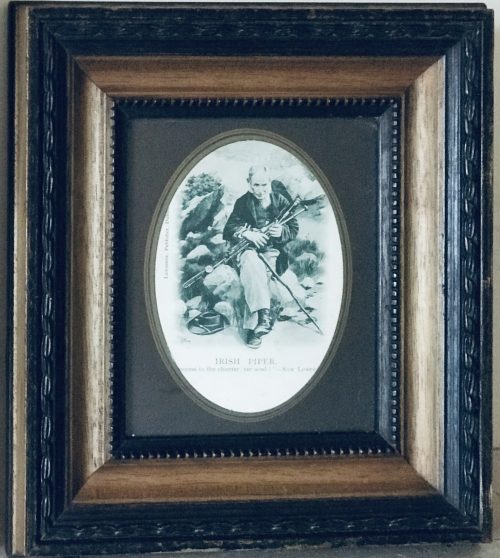



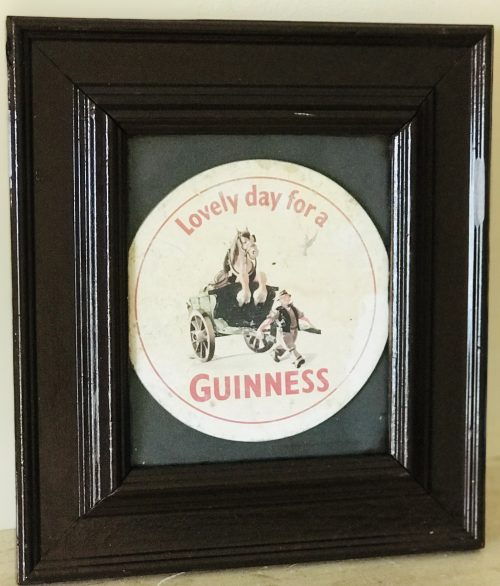





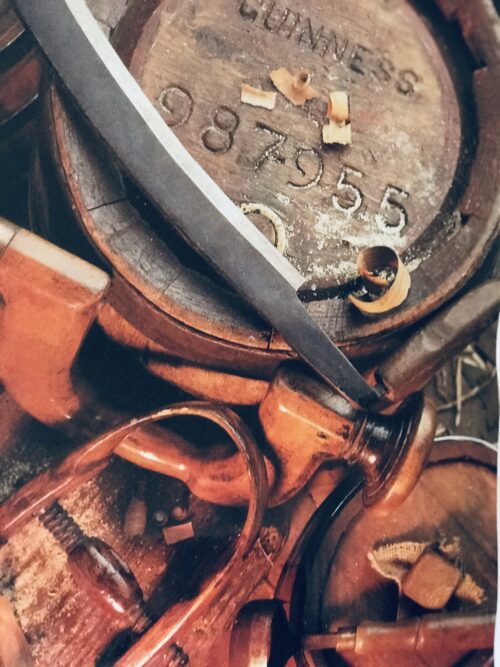
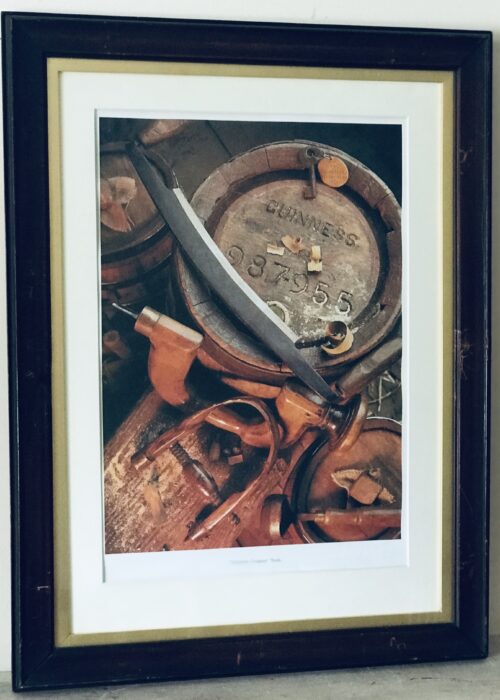

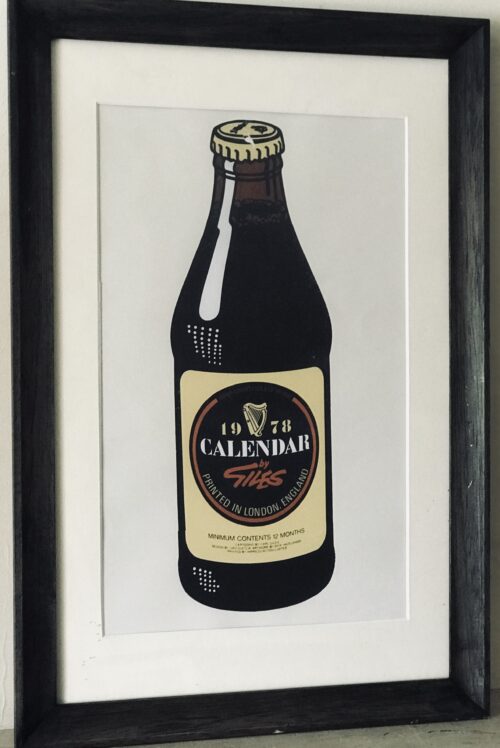
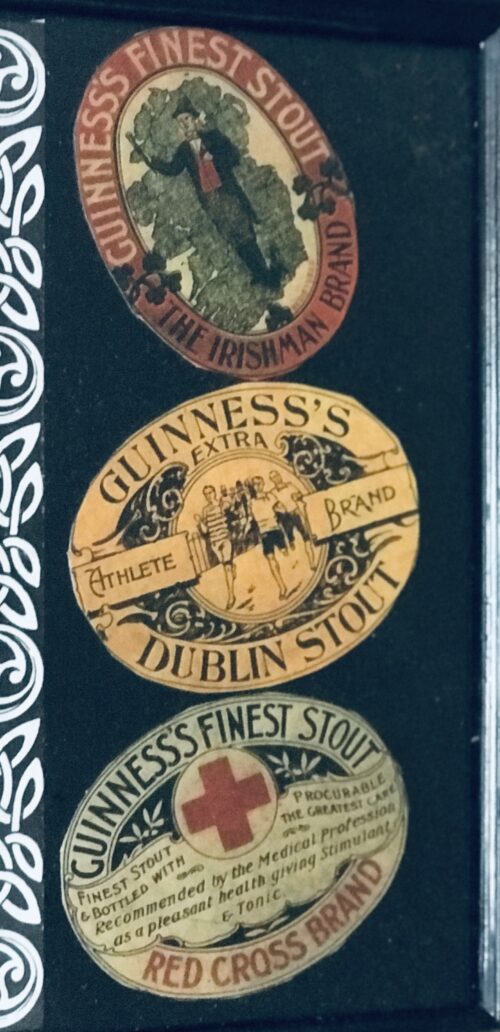
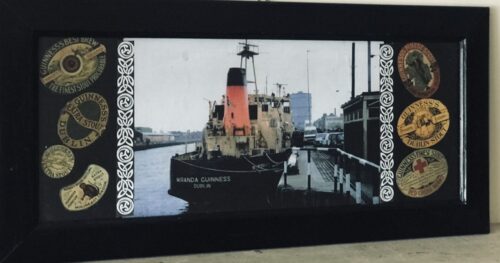
It was the good ship Vartry That sailed the sweet Liffee, And the skipper had taken the casks aboard, A goodly companee. Blue were the labels, and azure blue, Proclaiming double x, But neither the skipper nor the crew Had dreamt of storms or wrecks. Now as she steamed by the Ha’penny Bridge, The engine raised a row, While a cloud no bigger than a midge Loomed up on the starboard bow. And as they steered by Aston’s quay, The lookout man grew pale, “I feared we’d not escape,” says he, “McBirney’s summer sale”. And ere they reached the Customs House, Down in a wild vortex, The Vartry plunged, the cause was plain, She’d too much Double X. All you who drink of James Gate, (No matter what your sex), Take warning by the Vartry’s fate, Thro’ too much Double X.
| Name | Built | Notes | Disposed |
| Lagan | Harland & Wolfe 1877 | Sunk 1970s at Sandy Bay, Lurgan as foundations at Scotts | |
| Shannon | Allsop, Preston 1883 | Double ended and could proceed forwards or backwards | Sold and sank off Balbriggan |
| Liffey | Ross & Walpole, Dublin 1888 | Commandeered in WW1 for service in France! | Wrecked at Skane flat Lough Neagh still visible |
| Lee | Ross & Walpole, Dublin 1889 | ||
| Boyne | Ross & Walpole, Dublin 1891 | Commandeered in WW1 for service in France | Embedded in Hutchesons sand quay |
| Slaney | Ross & Walpole, Dublin 1892 | Sunk at Tarmac as foundations for quay | |
| Siur | Ross & Walpole, Dublin 1892 | Long of Cork worked on river Slaney | |
| Foyle | Ross & Walpole, Dublin 1897 | Sank on rocks near Lurgan 1950s | |
| Moy | Ross & Walpole, Dublin 1897 | J Tinsley Belfast | |
| Vartry | Ross & Walpole 65/67 North Wall 1902 | James Transport London, then Belfast | |
| Dodder | Ross & Walpole, Dublin 1911 | Broken at Lees Carlingford 1946 | |
| Tolka | Ross & Walpole, Dublin 1913 | Hamilton Gabbie Comber co Down | |
| Docena | Built in Norwich Bought UK 1920 | Sank at Custom House but raised | Scrapped 1950 |
| Farmleigh | Vickers (Ireland) Alexandra basin 1927 | Sold to RN 1938 | Used at Scapa Flow |
| Knockmaroon | Vickers (Ireland) Alexandra basin 1929 | Sold 1938 | John Hunt, Leeds |
| Chapelizod | Vickers (Ireland) Alexandra basin 1929 | Sold 1938 | Blown up on Lough Neagh 1970 |
| Fairyhouse | Vickers (Ireland) Alexandra basin 1929 | Sold To RN 1938 | Worked on Humber and was at Dunkirk evacuation |
| Castleknock | Vickers (Ireland) Alexandra basin 1929 | Sold 1961 | Blown up on Lough Neagh 1970 |
| Clonsilla | Vickers (Ireland) Alexandra basin 1930 | Sold 1961 | Sank in Lough Neagh during a storm in 60 feet depth of water |
| Killiney | Vickers (Ireland) Alexandra basin 1930 | Sold 1961 | Sunk 1970s at Ballyginiff point as foundations |
| Sandyford | Vickers (Ireland) Alexandra basin 1931 | Sold 1961 | |
| Howth | Vickers (Ireland) Alexandra basin 1931 | Sold 1961 | |
| Seapoint | Vickers (Ireland) Alexandra basin 1931 | Sold 1961 |
| Name | Tons | Built | Bought from | Disposed |
| W.M Barkley | 569 | Ailsa, Troon 1898 | 1913,Kellys, Belfast, | Torpedoed and sank 1917 |
| Carrowdore | 598 | Bowling 1914 | Kellys, 1914 | Sold to Davidsons Belfast 1952, broken 1959 |
| Clarecastle | 664 | Bowling 1914 | Kellys, 1915 | Sold to Davidsons Belfast 1953, broken 1959 |
| Clareisland | 633 | Bowling 1915 | Kellys, 1915 | Sold, 1931 to Antrim Iron Ore Co and sank near Isle of Man 1939 |
| Guinness | 1151 | Ailsa Troon, 1931 | Served the Dublin to London trade to 1938, disposed 1963 | |
| Lady Grania | 1252 | Ailsa Troon, 1952 | Sold 1976 renamed Lady Scotia Stranded On Pacific coast of Mexico 1981 | |
| Lady Gwendolen | 1166 | Ardross Dockyard 1953 | Sold 1977 to Cypriot shipping renamed Paros and sank off Nova Scotia 1979 | |
| Lady Patricia | 1187 | Charles Hill Bristol 1962 | Broken April 1993 | |
| Miranda Guinness | 1540 | Charles Hill, 1976 Bristol | Broken April 1993 |
| Vessel | Owner | Size | comment |
| Lady Olive | Lord Ardilaun | Struck Rock in Corrib 7-2-1872, relieved Captain Boycott | |
| Medusa II | Guinness | 627 ton | 1906-1915, sunk as HMY Mollusc off Blyth |
| Sea Huntress | Loel Guinness | Married Princess Gloria aboard, off Antibes | |
| Cetonia | Edward Cecil | Schooner | 1880 |
| Ceto | Edward Guinness | 106 ton | Entertained Prince Edward at Cowes 1886 accompanied by Mrs Keppel |
| Leander | Rupert Guinness | 90 foot yawl | Won King’s Cup at Cowes |
| Atlantis | Loel Guinness | 216 ton | |
| Calypso | Loel Guinness | 330 ton | In the course of preservation at Brest |
| Fantome | Arthur Ernest Guinness | 139 ton | 1906-1938 |
| Fantome | Arthur Ernest Guinness | Ex Belem | 1921-1951 |
| Fantome | Arthur Ernest Guinness | Ex Flying Cloud, four masted | 1938-1951 |
| Rossaura | Lord Moyne | 1400 ton ex Dieppe | 1933 – 1940, Sank off Torbruk |
| Roussalka | Lord Moyne | 1400 ton ex Brighton | 1931 -1933, Sank off Killary |
| Amo | Arthur Ernest Guinness | Ex ML 482 | 1928-1949, scrapped in Dublin |
| Rob Roy McGregor | John Guinness (banking family) |

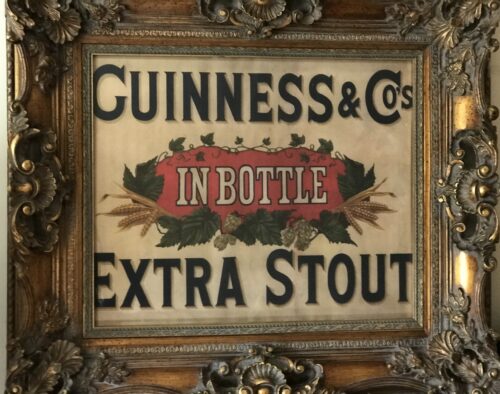

| Date | Performer(s) | Opening act(s) | Tour/Event | Attendance | Notes |
|---|---|---|---|---|---|
| 29 June 1985 | U2 | In Tua Nua, R.E.M., The Alarm, Squeeze | The Unforgettable Fire Tour | 57,000 | First Irish act to have a headline concert. Part of the concert was filmed for the group's documentary Wide Awake in Dublin. |
| 28 June 1986 | Simple Minds | Once Upon A Time Tour | Guest appearance by Bono | ||
| 27 June 1987 | U2 | Light A Big Fire, The Dubliners, The Pogues, Lou Reed | The Joshua Tree Tour | 114,000 | |
| 28 June 1987 | Christy Moore, The Pretenders, Lou Reed, Hothouse Flowers | ||||
| 28 June 1996 | Tina Turner | Brian Kennedy | Wildest Dreams Tour | 40,000/40,000 | |
| 16 May 1997 | Garth Brooks | World Tour II | |||
| 18 May 1997 | |||||
| 29 May 1998 | Elton John & Billy Joel | Face to Face 1998 | |||
| 30 May 1998 | |||||
| 24 June 2005 | U2 | The Radiators from Space, The Thrills, The Bravery, Snow Patrol, Paddy Casey, Ash | Vertigo Tour | 246,743 | |
| 25 June 2005 | |||||
| 27 June 2005 | |||||
| 20 May 2006 | Bon Jovi | Nickelback | Have a Nice Day Tour | 81,327 | |
| 9 June 2006 | Robbie Williams | Basement Jaxx | Close Encounters Tour | ||
| 6 October 2007 | The Police | Fiction Plane | The Police Reunion Tour | 81,640 | Largest attendance of the tour. |
| 31 May 2008 | Celine Dion | Il Divo | Taking Chances World Tour | 69,725 | Largest attendance for a solo female act |
| 1 June 2008 | Westlife | Shayne Ward | Back Home Tour | 85,000 | Second Irish act to have a headline concert. Largest attendance of the tour. Part of the concert was filmed for the group's documentary and concert DVD 10 Years of Westlife - Live at Croke Park Stadium. |
| 14 June 2008 | Neil Diamond | ||||
| 13 June 2009 | Take That | The Script | Take That Present: The Circus Live | ||
| 24 July 2009 | U2 | Glasvegas, Damien Dempsey | U2 360° Tour | 243,198 | |
| 25 July 2009 | Kaiser Chiefs, Republic of Loose | ||||
| 27 July 2009 | Bell X1, The Script | The performances of "New Year's Day" and "I'll Go Crazy If I Don't Go Crazy Tonight" were recorded for the group's live album U22 and for the band's remix album Artificial Horizon and the live EP Wide Awake in Europe, respectively. | |||
| 5 June 2010 | Westlife | Wonderland, WOW, JLS, Jedward | Where We Are Tour | 86,500 | Largest attendance of the tour. |
| 18 June 2011 | Take That | Pet Shop Boys | Progress Live | 154,828 | |
| 19 June 2011 | |||||
| 22 June 2012 | Westlife | Jedward, The Wanted, Lawson | Greatest Hits Tour | 187,808[24] | The 23 June 2012 date broke the stadium record for selling out its tickets in four minutes. Eleventh largest attendance at an outdoor stadium worldwide. Largest attendance of the tour and the band's music career history. Part of the concert was filmed for the group's documentary and concert DVD The Farewell Tour - Live in Croke Park. |
| 23 June 2012 | |||||
| 26 June 2012 | Red Hot Chili Peppers | Noel Gallagher's High Flying Birds, The Vaccines | I'm with You World Tour | ||
| 23 May 2014 | One Direction | 5 Seconds of Summer | Where We Are Tour | 235,008 | |
| 24 May 2014 | |||||
| 25 May 2014 | |||||
| 20 June 2015 | The Script & Pharrell Williams | No Sound Without Silence Tour | 74,635 | ||
| 24 July 2015 | Ed Sheeran | x Tour | 162,308 | ||
| 25 July 2015 | |||||
| 27 May 2016 | Bruce Springsteen | The River Tour 2016 | 160,188 | ||
| 29 May 2016 | |||||
| 9 July 2016 | Beyoncé | Chloe x Halle, Ingrid Burley | The Formation World Tour | 68,575 | |
| 8 July 2017 | Coldplay | AlunaGeorge, Tove Lo | A Head Full of Dreams Tour[25] | 80,398 | |
| 22 July 2017 | U2 | Noel Gallagher's High Flying Birds | The Joshua Tree Tour 2017 | 80,901 | |
| 17 May 2018 | The Rolling Stones | The Academic | No Filter Tour | 64,823 | |
| 15 June 2018 | Taylor Swift | Camila Cabello, Charli XCX | Taylor Swift's Reputation Stadium Tour | 136.000 | Swift became the first woman headline two concerts in a row there. |
| 16 June 2018 | |||||
| 7 July 2018 | Michael Bublé | Emeli Sandé | |||
| 24 May 2019 | Spice Girls | Jess Glynne | Spice World - 2019 UK Tour | ||
| 5 July 2019 | Westlife | James Arthur Wild Youth | The 20 Touror The Twenty Tour | The 5 July 2019 date sold out its tickets in six minutes. Second date released were also sold out in under forty-eight hours. | |
| 6 July 2019 |

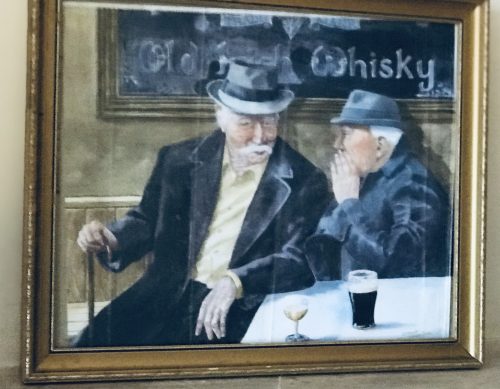


 |
|
 |
|
| Introduced | 1879, renamed as Paddy in 1912 |
|---|---|
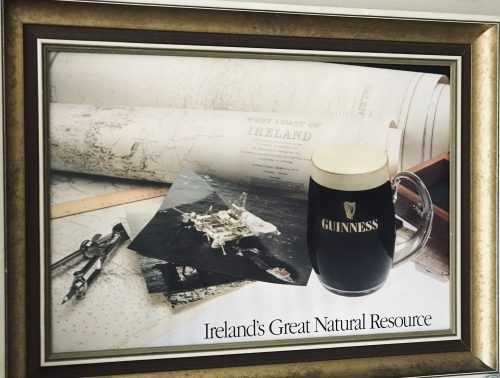
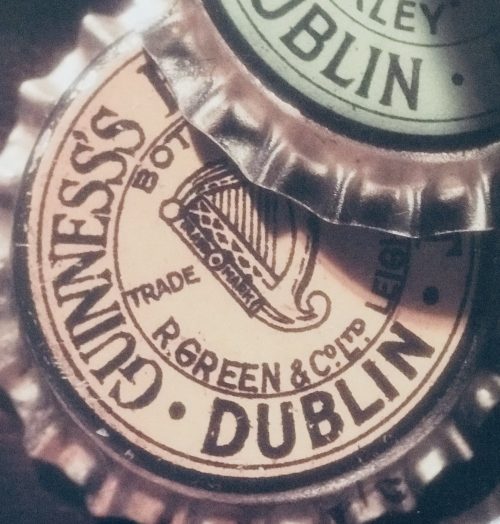


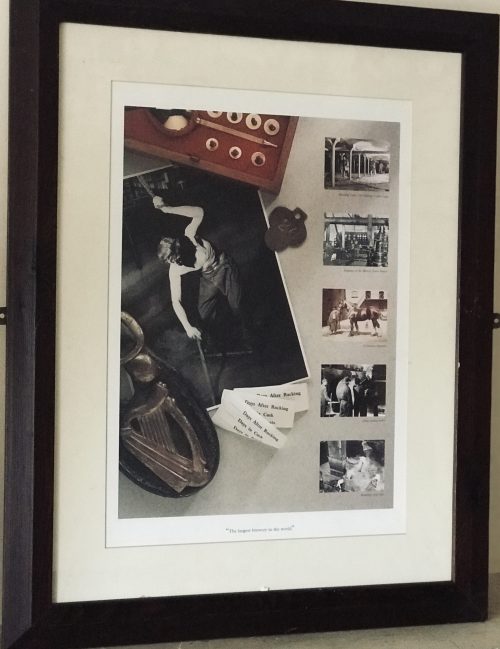
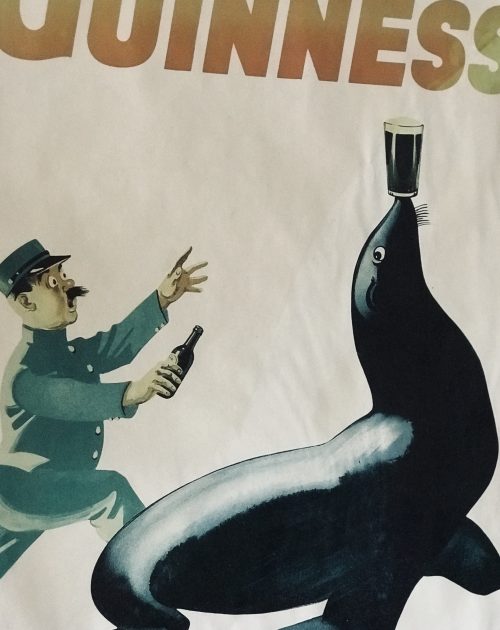



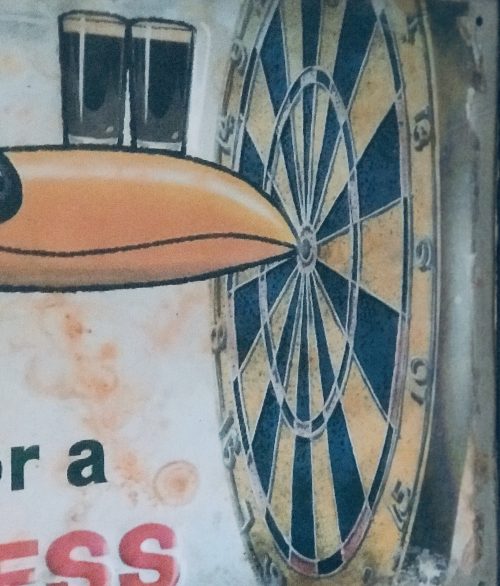


| Period | Sponsor(s) | Name |
|---|---|---|
| 1887−1994 | No main sponsor | The All-Ireland Championship |
| 1995−2007 | The Guinness Hurling Championship | |
| 2008−2009 | The GAA Hurling All-Ireland Championship | |
| 2010−2012 | The GAA Hurling All-Ireland Championship | |
| 2013−2016 | The GAA Hurling All-Ireland Championship | |
| 2017−2019 | The GAA Hurling All-Ireland Championship |


A 20-pack of Sweet Afton cigarettes with a text warning in both Irish and English stating "Smoking kills". |
|
| Product type | Cigarette |
|---|---|

 Source: Billy Stickland/INPHO
2. Sylvie Linnane (Gort)
Linnane was a teak tough corner back who took no prisoners.
A farmer who also hires out machinery, Linnane has dabbled in coaching and retains very strong links with his home club, Gort.
Sylvie’s three sons, Sylvie Óg, Tadhg and Darragh, won Galway senior club hurling medals with Gort last year.
Source: Billy Stickland/INPHO
2. Sylvie Linnane (Gort)
Linnane was a teak tough corner back who took no prisoners.
A farmer who also hires out machinery, Linnane has dabbled in coaching and retains very strong links with his home club, Gort.
Sylvie’s three sons, Sylvie Óg, Tadhg and Darragh, won Galway senior club hurling medals with Gort last year.
 Source: James Crombie/INPHO
3. Conor Hayes (Kiltormer)
Hayes is the last Galway man to lift the Liam MacCarthy Cup on Galway’s behalf.
The Kiltmorer man was skipper of the 1987 and 1988 All-Ireland winning teams and was manager in 2005 when Galway lost the final to Cork.
He strongly believes that the Tribesmen can end a 27-year famine and shared his views with The42 in this piece.
Source: James Crombie/INPHO
3. Conor Hayes (Kiltormer)
Hayes is the last Galway man to lift the Liam MacCarthy Cup on Galway’s behalf.
The Kiltmorer man was skipper of the 1987 and 1988 All-Ireland winning teams and was manager in 2005 when Galway lost the final to Cork.
He strongly believes that the Tribesmen can end a 27-year famine and shared his views with The42 in this piece.
 Source: James Crombie/INPHO
4. Ollie Kilkenny (Kiltormer)
Kilkenny was a key member of the successful Kiltormer teams of the 1980s and 1990s, and won two All-Ireland senior medals with Galway in 1987 and 1988.
A psychiatric nurse by profession, Kilkenny formed one-third of a revered full-back line alongside clubmate Conor Hayes and Sylvie Linnane.
Ollie’s sons Jason and Keith won Nicky Rackard Cup medals with Roscommon this year.
Source: James Crombie/INPHO
4. Ollie Kilkenny (Kiltormer)
Kilkenny was a key member of the successful Kiltormer teams of the 1980s and 1990s, and won two All-Ireland senior medals with Galway in 1987 and 1988.
A psychiatric nurse by profession, Kilkenny formed one-third of a revered full-back line alongside clubmate Conor Hayes and Sylvie Linnane.
Ollie’s sons Jason and Keith won Nicky Rackard Cup medals with Roscommon this year.
 Source: James Crombie/INPHO
5. Peter Finnerty (Mullagh)
Part of one of the most revered half-back lines of all time, Finnerty went on to become a hurling analyst with RTÉ on The Sunday Game.
Involved in the Supermac’s franchise in Tuam, Finnerty was coach of the Mayo hurlers from 2007-2010.
On the eve of Sunday’s final, Finnerty will host a Bord Gáis Energy Legends Tour at Croke Park.
Source: James Crombie/INPHO
5. Peter Finnerty (Mullagh)
Part of one of the most revered half-back lines of all time, Finnerty went on to become a hurling analyst with RTÉ on The Sunday Game.
Involved in the Supermac’s franchise in Tuam, Finnerty was coach of the Mayo hurlers from 2007-2010.
On the eve of Sunday’s final, Finnerty will host a Bord Gáis Energy Legends Tour at Croke Park.
 Source: James Crombie/INPHO
6. Tony Keady (Killimordaly)
Keady was a member of the Galway U21 backroom team this year, working alongside boss Johnny Kelly.
Currently caretaker at Calasanctius College in Oranmore, Keady coached the school to a first ever senior B title this year.
In 1989, the build-up to the All-Ireland semi-final against Tipperary was overshadowed by the ‘Tony Keady affair’, when the majestic centre back was suspended.
Source: James Crombie/INPHO
6. Tony Keady (Killimordaly)
Keady was a member of the Galway U21 backroom team this year, working alongside boss Johnny Kelly.
Currently caretaker at Calasanctius College in Oranmore, Keady coached the school to a first ever senior B title this year.
In 1989, the build-up to the All-Ireland semi-final against Tipperary was overshadowed by the ‘Tony Keady affair’, when the majestic centre back was suspended.
 Source: Billy Stickland/INPHO
7. Gerry McInerney (Kinvara)
The man with the famous white boots now runs a sports shop in Oranmore.
McInerney is still involved in farming and his son, Gearóid, is a member of the Galway senior panel preparing for Sunday’s final.
Gearóid made his first championship start against Dublin in the drawn Leinster championship match at Croke Park this year.
Gerry played in a Galway senior hurling final for Kinvara as recently as 2007, when he was 42 years of age.
Source: Billy Stickland/INPHO
7. Gerry McInerney (Kinvara)
The man with the famous white boots now runs a sports shop in Oranmore.
McInerney is still involved in farming and his son, Gearóid, is a member of the Galway senior panel preparing for Sunday’s final.
Gearóid made his first championship start against Dublin in the drawn Leinster championship match at Croke Park this year.
Gerry played in a Galway senior hurling final for Kinvara as recently as 2007, when he was 42 years of age.
 Source: Morgan Treacy/INPHO
8. Michael Coleman (Abbeyknockmoy)
Midfielder Coleman was involved in finance and qualified as a teacher.
Heavily involved in the juvenile ranks at Abbeyknockmoy, Coleman was the club’s hurling board delegate and manager of the U15 and U16 teams this year.
Michael was also the coach to the Leitrim senior hurlers in 2015 and his son, Dara, has been earmarked as one to watch in future years.
Source: Morgan Treacy/INPHO
8. Michael Coleman (Abbeyknockmoy)
Midfielder Coleman was involved in finance and qualified as a teacher.
Heavily involved in the juvenile ranks at Abbeyknockmoy, Coleman was the club’s hurling board delegate and manager of the U15 and U16 teams this year.
Michael was also the coach to the Leitrim senior hurlers in 2015 and his son, Dara, has been earmarked as one to watch in future years.
 Source: James Crombie/INPHO
9. Pat Malone (Oranmore-Maree)
Malone won All-Ireland medals in 1987 and 1988 and went on to become an Allstar in 1993.
A key member of Anthony Cunningham’s Galway senior backroom team, Malone is also involved with his home club Oranmore-Maree.
Coleman’s son, Ross, is a member of the Galway minor hurling panel.
Source: James Crombie/INPHO
9. Pat Malone (Oranmore-Maree)
Malone won All-Ireland medals in 1987 and 1988 and went on to become an Allstar in 1993.
A key member of Anthony Cunningham’s Galway senior backroom team, Malone is also involved with his home club Oranmore-Maree.
Coleman’s son, Ross, is a member of the Galway minor hurling panel.
 Source: Alan Betson/INPHO
10. Anthony Cunningham (St Thomas’)
Galway’s current senior hurling boss has made quite a name for himself in coaching since his playing days.
He enjoyed huge football success with Roscommon club side St Brigid’s and Garrycastle in Westmeath before guiding Galway’s U21 hurlers to All-Ireland glory in 2011.
He’s in his fourth season as the county’s senior hurling boss and hoping to mastermind a first Liam MacCarthy Cup success since 1988 on Sunday.
Source: Alan Betson/INPHO
10. Anthony Cunningham (St Thomas’)
Galway’s current senior hurling boss has made quite a name for himself in coaching since his playing days.
He enjoyed huge football success with Roscommon club side St Brigid’s and Garrycastle in Westmeath before guiding Galway’s U21 hurlers to All-Ireland glory in 2011.
He’s in his fourth season as the county’s senior hurling boss and hoping to mastermind a first Liam MacCarthy Cup success since 1988 on Sunday.
 Source: Cathal Noonan/INPHO
11. Brendan Lynskey (Meelick-Eyrecourt)
Now running a restaurant in Athlone, Lynskey was a teak-tough centre forward who gave as good as he got.
Renowned as a shrewd business man with a penchant for succeeding in whatever he turns his hand to, Lynskey challenged Anthony Cunningham for the Galway senior hurling post last year.
Former Galway U21 boss Lynskey has developed a significant property portfolio in recent years, as a key leader with the Roebuck International group.
Source: Cathal Noonan/INPHO
11. Brendan Lynskey (Meelick-Eyrecourt)
Now running a restaurant in Athlone, Lynskey was a teak-tough centre forward who gave as good as he got.
Renowned as a shrewd business man with a penchant for succeeding in whatever he turns his hand to, Lynskey challenged Anthony Cunningham for the Galway senior hurling post last year.
Former Galway U21 boss Lynskey has developed a significant property portfolio in recent years, as a key leader with the Roebuck International group.
 Source: James Crombie/INPHO
12. Martin Naughton (Turloughmore)
Naughton is now self-employed with his own oil business in Claregalway.
Former manager of the Turloughmore senior club, Naughton is also a keen golfer and has played in the prestigious Pierce Purcell shield.
Naughton retired from intercounty hurling in 1992 after suffering cruciate knee ligament damage.
Source: James Crombie/INPHO
12. Martin Naughton (Turloughmore)
Naughton is now self-employed with his own oil business in Claregalway.
Former manager of the Turloughmore senior club, Naughton is also a keen golfer and has played in the prestigious Pierce Purcell shield.
Naughton retired from intercounty hurling in 1992 after suffering cruciate knee ligament damage.
 Source: Billy Stickland/INPHO
13. Michael McGrath (Sarsfields)
The man known as ‘Hopper’ scored two points against Tipperary in the 1988 decider.
Currently manager of the Sarsfields senior camogie team, he has three daughters involved in the county set-up – Niamh, Clodagh and Orlaith.
Michael’s wife Geraldine is a former Ireland hockey international and chair of the Galway camogie board.
Source: Billy Stickland/INPHO
13. Michael McGrath (Sarsfields)
The man known as ‘Hopper’ scored two points against Tipperary in the 1988 decider.
Currently manager of the Sarsfields senior camogie team, he has three daughters involved in the county set-up – Niamh, Clodagh and Orlaith.
Michael’s wife Geraldine is a former Ireland hockey international and chair of the Galway camogie board.
 Source: James Crombie/INPHO
14. Joe Cooney (Sarsfields)
Cooney is renowned as one of Galway’s all-time greats and he established the ‘Joe Cooney school of hurling’ in later years.
Now helping to maintain a school in Loughrea, Cooney has also enjoyed stints as coach of his local club Sarsfields.
Cooney, also a farmer, has a huge interest in Sunday’s All-Ireland finals, as two sons are involved.
Kevin is a sub on the Galway minor hurling panel and Joseph likewise for the seniors.
Joe’s daughter, Maria, is a key member of the county’s senior camogie team.
Source: James Crombie/INPHO
14. Joe Cooney (Sarsfields)
Cooney is renowned as one of Galway’s all-time greats and he established the ‘Joe Cooney school of hurling’ in later years.
Now helping to maintain a school in Loughrea, Cooney has also enjoyed stints as coach of his local club Sarsfields.
Cooney, also a farmer, has a huge interest in Sunday’s All-Ireland finals, as two sons are involved.
Kevin is a sub on the Galway minor hurling panel and Joseph likewise for the seniors.
Joe’s daughter, Maria, is a key member of the county’s senior camogie team.
 Source: Billy Stickland/INPHO
15. Éanna Ryan (Killimordaly)
Ryan was told that he might never play hurling again after suffering a serious head injury in a club game against Turloughmore in 1990.
But eight years later, he was back as a late sub for Killimordaly against Kinvara.
Ryan’s plight shocked the hurling world at the time but he’s made a good recovery and is currently working as a rep for a drinks company.
He’s also involved in underage coaching with Clarinbridge.
Source: Billy Stickland/INPHO
15. Éanna Ryan (Killimordaly)
Ryan was told that he might never play hurling again after suffering a serious head injury in a club game against Turloughmore in 1990.
But eight years later, he was back as a late sub for Killimordaly against Kinvara.
Ryan’s plight shocked the hurling world at the time but he’s made a good recovery and is currently working as a rep for a drinks company.
He’s also involved in underage coaching with Clarinbridge.
 Source: James Crombie/INPHO
Source: James Crombie/INPHO
 Source: Alan Betson/INPHO
Tony Kilkenny (Kiltormer)
Brother of corner back Ollie, Tony came on as a sub for Naughton with 13 minutes left.
A retired male nurse, Tony is now running a successful bus hire company.
Source: Alan Betson/INPHO
Tony Kilkenny (Kiltormer)
Brother of corner back Ollie, Tony came on as a sub for Naughton with 13 minutes left.
A retired male nurse, Tony is now running a successful bus hire company.
 Source: James Crombie/INPHO
Gerry Burke (Turloughmore)
In 1986, Burke scored all of Turloughmore’s nine points in the All-Ireland club semi-final defeat to eventual winners Kilruane MacDonagh’s of Tipperary.
He has been involved in coaching at club level with Turloughmore in more recent times.
Source: James Crombie/INPHO
Gerry Burke (Turloughmore)
In 1986, Burke scored all of Turloughmore’s nine points in the All-Ireland club semi-final defeat to eventual winners Kilruane MacDonagh’s of Tipperary.
He has been involved in coaching at club level with Turloughmore in more recent times.
 Source: James Crombie/INPHO
Phelim Murphy
Known as ‘the Godfather of Galway hurling’, Murphy was mastermind of the Turloughmore teams that dominated the county senior hurling championship in the 1960s.
He was club chairman and manager simultaneously when Turloughmore won six-in-a-row from 1961-66.
Murphy was selector in 1972 when Galway won the All-Ireland U21 hurling title and he went on to link up with Farrell from 1981 on.
Murphy served as secretary of the Galway hurling board from 1982-2004, and he was also Connacht chairman and vice-chairman during a lengthy administrative career.
Source: James Crombie/INPHO
Phelim Murphy
Known as ‘the Godfather of Galway hurling’, Murphy was mastermind of the Turloughmore teams that dominated the county senior hurling championship in the 1960s.
He was club chairman and manager simultaneously when Turloughmore won six-in-a-row from 1961-66.
Murphy was selector in 1972 when Galway won the All-Ireland U21 hurling title and he went on to link up with Farrell from 1981 on.
Murphy served as secretary of the Galway hurling board from 1982-2004, and he was also Connacht chairman and vice-chairman during a lengthy administrative career.
 Source: © Billy Stickland/INPHO
Bernie O’Connor
Another former Galway boss, O’Connor went on to become a successful administrator at board level.
O’Connor also hurled for Galway and he retains a keen interest in his local club Oranmore
Source: © Billy Stickland/INPHO
Bernie O’Connor
Another former Galway boss, O’Connor went on to become a successful administrator at board level.
O’Connor also hurled for Galway and he retains a keen interest in his local club Oranmore

The 80s was a time when Ulster football was considered a distant cousin to the majesty of Kerry, even when the Kingdom's golden age was ending.
But such was Tyrone's initial dominance of the 1986 All-Ireland final against Kerry by half-time their fans began to panic about not having accommodation in Dublin that night. They needn't have worried as a seven-point lead turned into an eight-point pounding in the final 20 minutes.
The crucial moment was a Tyrone penalty, which was sent over the bar by Kevin McCabe. From the kick-out, Kerry whizzed downfield and Pat Spillane finished the move with a goal that reduced the arrears to four points. A Mikey Sheehy goal completed a nightmarish capitulation.
It was the last hurrah from a great Kerry team who had taken Sam Maguire home eight times in 12 years. An 11-year drought followed.
Moy's Plunkett Donaghy was Tyrone's class act back then but the loss of Eugene McKenna and John Lynch through injury coincided with the late collapse.
Moy send another marauding midfielder out against Kerry on Sunday in Seán Cavanagh along with clubmates Philip Jordan and Ryan Mellon.
KERRY: C Nelligan; P Ó Sé, S Walsh, M Spillane; T Doyle (captain), T Spillane, G Lynch; J O'Shea, A O'Donovan; W Maher, D Moran (0-2), P Spillane (1-4); M Sheehy (1-4, three points from frees), E Liston (0-2), G Power (0-1). Sub: T O'Dowd (0-2) for O'Donovan.
TYRONE: A Skelton; J Mallon, K McGarvey, J Lynch; K McCabe (0-1, from a penalty), N McGinn, P Ball; P Donaghy, H McClure; M McClure (0-1), E McKenna, S McNally (0-2); M Mallon (0-4, three frees), D O'Hagan (0-1), P Quinn (1-1). Subs: S Conway for Lynch, S Rice for McKenna, A O'Hagan for M Mallon.